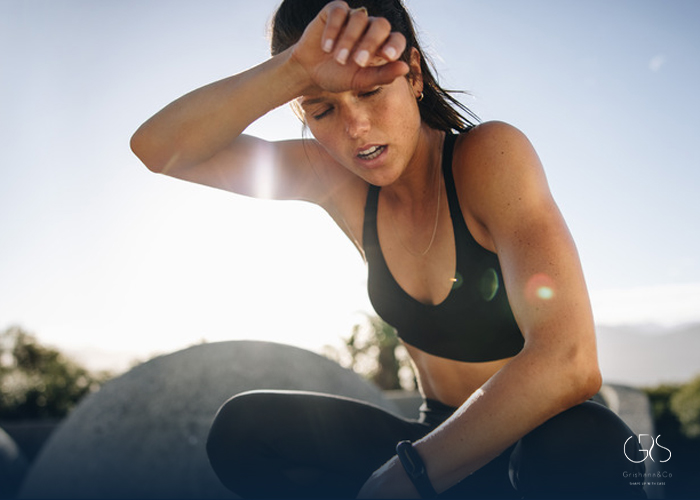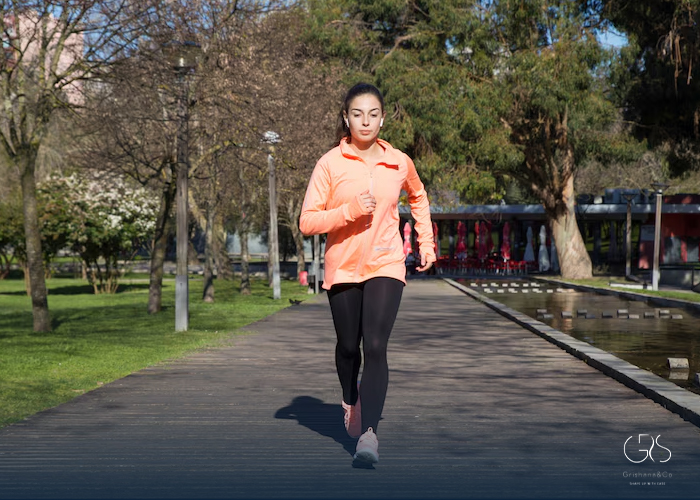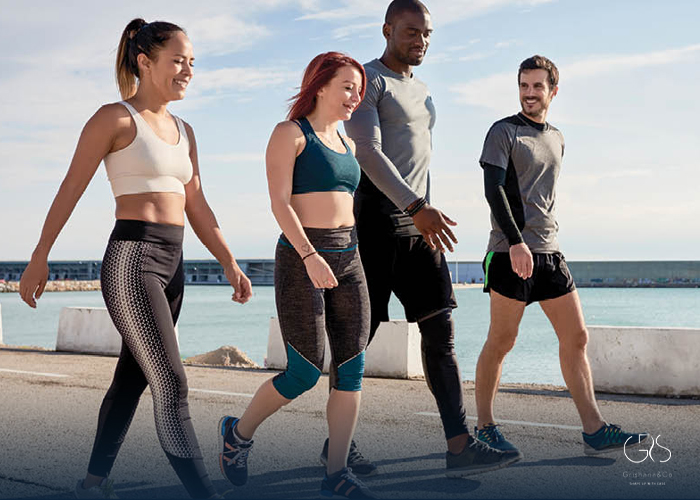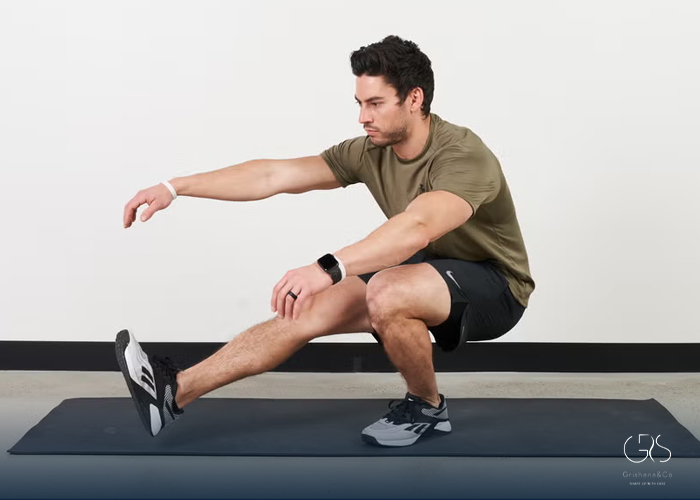Sweating is a natural bodily process that helps regulate our body temperature. It is often associated with physical exertion and is believed by many to be an indicator of calories burned during exercise. However, is there really a link between sweating and burning calories? In this article, we will explore the science behind sweating, its purpose, the risks associated with excessive sweating, and whether or not sweating actually burns calories. Additionally, we will delve into factors that affect the rate at which individuals sweat and the variability in sweat gland activity. Finally, we will discuss the different methods to burn calories and measure caloric expenditure during exercise.
What Does Sweating Do?
Sweating, or perspiration, is one of the body’s mechanisms to regulate temperature. When our body heats up due to external factors, such as exercise or warm weather, the brain sends signals to the sweat glands to produce sweat. As the sweat evaporates from the skin’s surface, it cools the body down, maintaining a stable internal temperature.
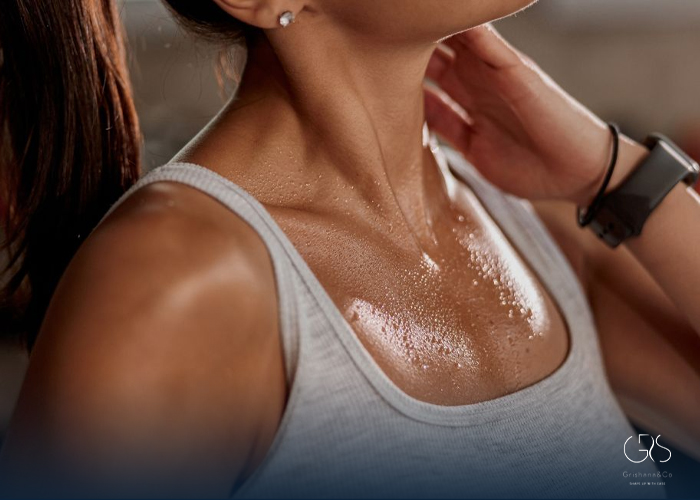
Risks of Sweating:
While sweating is a natural and essential process, excessive sweating can indicate a potential problem. Hyperhidrosis, a medical condition characterized by excessive sweating beyond what is necessary for temperature regulation, can lead to social embarrassment and discomfort. Additionally, excessive sweating may be a symptom of an underlying medical condition, such as hyperthyroidism or diabetes, and should be evaluated by a healthcare professional.
Does Sweating Burn Calories?
Contrary to popular belief, sweating itself does not directly burn calories. Sweating is simply the body’s response to heat, and the physical act of sweating does not contribute to calorie expenditure. However, sweating can be an indirect indicator of calories burned during physical activity. When we engage in exercise, our heart rate increases, leading to an increase in metabolism and caloric burn. As the body works harder and burns more calories, it generates more heat, triggering sweat production.
(I suggest you read more about sweating during exercise. You can find more information in my article.)
Why Does Everyone Sweat at Different Rates?
The rate at which individuals sweat can vary based on several factors, including genetics, fitness level, and body composition. Some people naturally have a higher sweating rate due to a greater number of sweat glands, while others may sweat less due to factors such as dehydration or certain medications. Interestingly, men tend to sweat more than women, primarily due to differences in body size, composition, and hormonal factors.
Sweat Gland Amounts and Activity:
The human body contains two types of sweat glands – eccrine and apocrine. Eccrine glands are the most abundant and are responsible for producing sweat that helps regulate body temperature. Apocrine glands, found mainly in the underarms and genital areas, release a different type of sweat containing fats and proteins, which produce odor when broken down by bacteria.

Problems With Eccrine Glands:
Disorders of the eccrine glands can lead to problems with sweating. Anhidrosis is a condition in which the body is unable to produce sweat, making it difficult for the body to cool down. On the other hand, hyperhidrosis, as mentioned earlier, is characterized by excessive sweating. Both conditions can have significant impacts on an individual’s overall health and well-being.
Temperature Acclimation:
Our bodies have the capacity to adapt to different temperature environments through a process called acclimation. As we expose ourselves to hotter or colder climates over time, our bodies adjust and become more efficient at regulating temperature. This adaptation can lead to changes in sweating patterns and overall heat tolerance.
How You Can Burn Calories:
To burn calories effectively, physical activity is crucial. Engaging in both cardiovascular exercises, such as running or cycling, and strength training exercises can help increase the body’s metabolic rate and caloric burn. Furthermore, incorporating interval training, which involves alternating periods of high-intensity exercise with rest or lower intensity, has been shown to be particularly effective for caloric expenditure.

Measuring Calorie Burn:
There are various methods to estimate the number of calories burned during exercise. One popular method is to use heart rate monitors, which calculate calorie burn based on heart rate, age, weight, and other factors. Additionally, calorie tracking devices and smartphone applications can provide estimates of caloric expenditure during different activities.
Estimating Exercise Intensity:
Understanding exercise intensity is crucial for estimating calorie burn accurately. The perceived rate of exertion (RPE) scale and heart rate monitoring can be used to assess exercise intensity. It is important to note that factors such as body weight, fitness level, and individual metabolism can affect the accuracy of estimated calorie expenditure.
Statistics on Caloric Expenditure and Exercise:
According to a study published in the journal “Medicine and Science in Sports and Exercise,” a 160-pound person can burn approximately 314 calories in 30 minutes of moderate-intensity biking, while a vigorous-intensity run can burn around 372 calories in the same timeframe (source: [1]). The actual caloric expenditure may vary depending on individual factors, but these statistics provide a general understanding of the calorie burn associated with different exercises.
Conclusion:
Sweating and burning calories are related but do not have a direct cause-and-effect relationship. Sweating is a natural response to exercise and heat, while calories are burned through the body’s metabolic processes during physical activity. Understanding the purpose of sweating, the risks associated with excessive sweating, and the factors influencing sweating rates can provide insight into our body’s thermoregulation mechanisms. By engaging in regular physical activity and focusing on exercise intensity, individuals can effectively burn calories and improve overall health.
Sources:
[1] American Council on Exercise: https://www.acefitness.org/education-and-resources/lifestyle/blog/5009/how-many-calories-are-you-really-burning
[2] Mayo Clinic: https://www.mayoclinic.org/healthy-lifestyle/fitness/expert-answers/sweating/faq-20058006
[3] Cleveland Clinic: https://my.clevelandclinic.org/health/articles/21199-anhidrosis-and-hypohidrosis
[4] National Institute of Arthritis and Musculoskeletal and Skin Diseases: https://www.niams.nih.gov/newsroom/spotlight-on-research/how-sweat-solve-problems?page=0#tab
[5] The Journal of Applied Physiology: https://pubmed.ncbi.nlm.nih.gov/26475105/
Sources
- American Council on Exercise, This Is How Many Calories You Really Burn at Your Favorite Fitness Classes
- Cleveland Clinic, Anhidrosis (Lack of Sweat)


